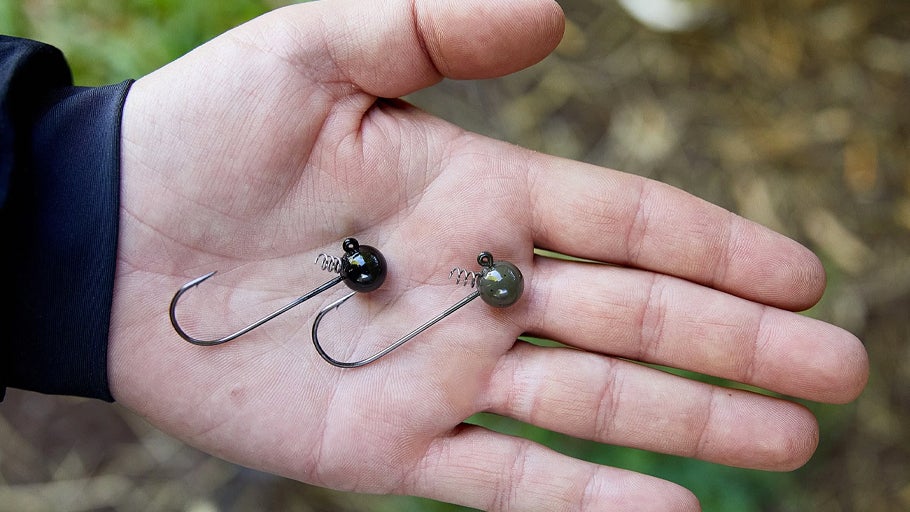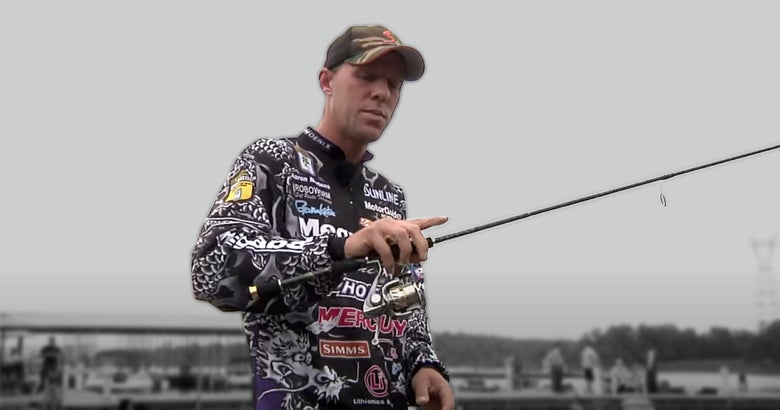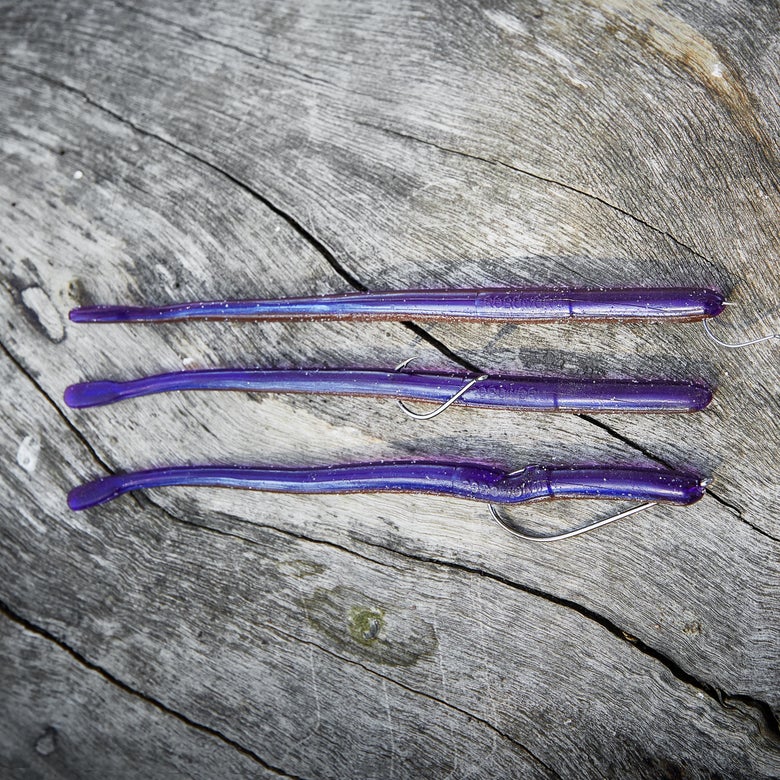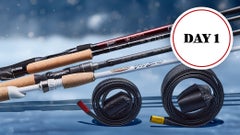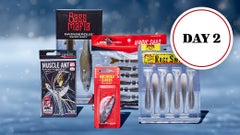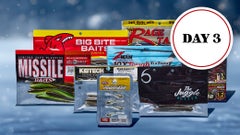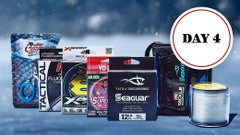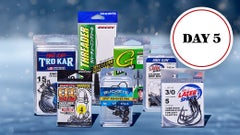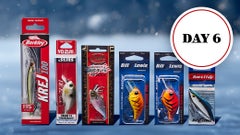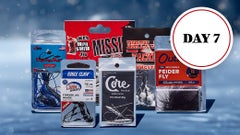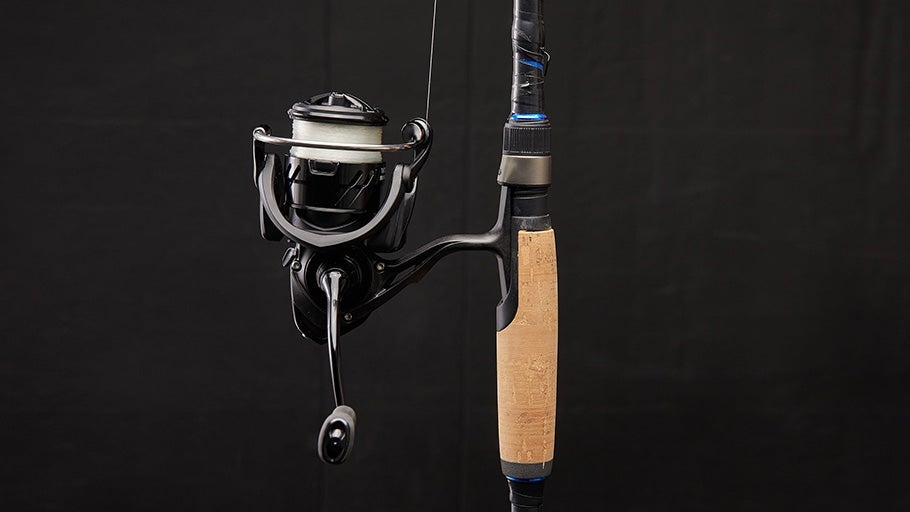
Drop Shot Gear Guide
Classified as the single best tactic for catching bass all throughout the country by legendary pro-angler Aaron Martens, the drop shot is an excellent year-round technique that excels in clear water and pressured fisheries. Perfected by the Japanese and made popular in the States in the ’90s, the drop shot became a game changer as soon as it was introduced to the bass fishing world.
Since then, it has been endlessly tweaked, adjusted, and adapted for a variety of fishing scenarios, becoming a staple technique for anglers of all levels. Whether you are a beginner or a professional, everyone should be able to rig and fish a drop shot properly. This guide will cover the gear you need to get started, various rigging methods, and some helpful tips and tricks to enhance your success with this highly productive finesse system.
Drop Shot Rods
Sensitivity is king! Look for the most sensitive spinning rod you can get your hands on, and also one in the 6’10” to 7’3” range, which will provide the perfect balance of control and leverage. A medium-light or medium-powered blank is excellent for fighting fish and absorbing angry head shakes, and a fast or extra-fast tip delivers quick hooksets and increased penetration, even in deep water. Choosing a rod with a split grip or full handle comes down to angler preference, but some would argue that the additional blank exposure from a split grip handle can provide increased sensitivity.
Drop Shot Reels
The drop shot is a finesse technique, so smaller spinning reels are commonly used. Many anglers feel, however, that the larger spool of 2500- to 3000-size spinning reels provides added line capacity for long-range casts and picks up more line per turn of the handle for quick reel-sets. Having a bigger spool also helps with reducing line twist that often plagues spinning reels with smaller spool diameters, and some anglers will even go up to a 4000-size reel to help combat these issues. No matter what size reel you opt for, choose a spinning reel with a smooth-starting drag to distribute the pressure evenly from a surging fish and prevent breakage with lighter lines.
Drop Shot Line
Many anglers are starting to gravitate toward a braided mainline attached to a fluorocarbon leader as opposed to strictly using a fluorocarbon mainline. This configuration greatly increases sensitivity, reduces line twists, and is often more cost-effective as you aren’t using an entire spool of fluorocarbon. Start with a high-vis braided mainline from 12- to 15-lb to provide a visual strike indicator for slack line or subtle bites. Top it off with a 6- to 10-lb fluorocarbon leader in the lightest size you can get away with for a stealthier approach and increased action. Line rating should be selected based on the water clarity and the amount of cover you are faced with, but an 8-lb fluorocarbon leader is a good starting point.
Drop Shot Modifications & Rigging
The Palomar isn’t the only knot you can use to tie up a drop shot, but it’s incredibly quick, easy to tie, and allows you to conveniently adjust your tag length for the weight. Keep in mind, if you choose to use a drop-shot hook with a swivel, you may need to use a different knot to attach your sinker. When tying up your drop shot using the Palomar knot, pass the tag end of your line back through the hook-eye before attaching your drop shot weight for a livelier and more horizontal presentation that positions the hook in an outward direction to improve your hook-up ratio. Check out our video on how to rig a drop shot for a closer look:
The most common rigging method for drop-shot fishing is nose hooking, as it provides the best way to maximize the tail action and movement of your bait. Open-style drop- shot hooks allow for easy nose rigging, and the exposed hook point makes them ideal for fishing open water and increasing your hook-up ratio. When fishing areas with vegetation and other types of cover, you may need to adopt a more weedless approach to prevent your drop shot from constantly snagging. By rigging your plastic on a straight shank “rebarb” style or EWG hook, you can reduce hang-ups and convert more short bites, as the hook point remains concealed in the bait with Texas-style rigging.
Experiment with wacky-rigging your drop shot baits during the warmer months of the year. When the fish are active and feeding more aggressively, there are times when the added action of a wacky rig can outperform standard rigging methods. When it comes to weights, you generally want to use the smallest size possible. Start with a drop shot weight around 3/16 oz in size and adjust from there depending on how windy it is and the depth you are fishing.
Drop Shot Tips & Tricks
When it comes to imparting action with the drop shot, oftentimes less is more, so try not to get carried away with constantly shaking, twitching, and ultimately overworking your lure. Hold the rod loose in your hand, and if you haven’t been bit in some time, try “deadsticking” your drop shot by leaving it in place without moving it, reeling it in a few feet and repeating. Generally speaking, you want to shake the drop shot on a slack line with the weight maintaining constant bottom contact, unless you are dropping down to suspended marks that you have spotted on your fishfinder.
During the colder months, it becomes even more important to slow things down, so many anglers will use scent markers to add some color and attraction to the belly or tail of their drop-shot bait to supplement the slower dead-sticking action. Don’t feel limited to fishing just a worm on the drop shot; try switching up your plastics between swimbaits, minnows, and finesse creature baits to turn more of those skeptical bass into biters! When drop shotting a craw-style lure, a shorter leader will provide a more natural look by keeping the bait closer to the bottom, and with a swimbait, consider pulling the drop shot along the bottom to maximize the tail action.
Drop Shot Colors
As always, water clarity and your local forage will play a big role in determining the best color for each situation, but if you are fishing a new body of water or just learning to drop shot, start with natural colors like browns, greens, and baitfish imitations. Green Pumpkin, Morning Dawn, and a variety of other natural colors are excellent patterns to start with. On bright days with bluebird skies, try using soft-plastic baits with flake to capture the reflection of the sun and the attention of the fish. When fishing dirty water, low-light conditions, or overcast weather, try using drop-shot baits with vibrant color accents; worms with a chartreuse tail are often a deadly option when the fish need help finding the lure.
Final Thoughts
Regardless of the season or where you are fishing throughout the country, the drop shot continues to be a reliable way to catch fish when nothing else is working. Whether you are faced with ultra-clear water, high-pressured fisheries, lethargic cold-water fish, or any scenario in between, next time you hit the lake, don’t push away from the dock without a drop shot tied on!
Related Content Links


